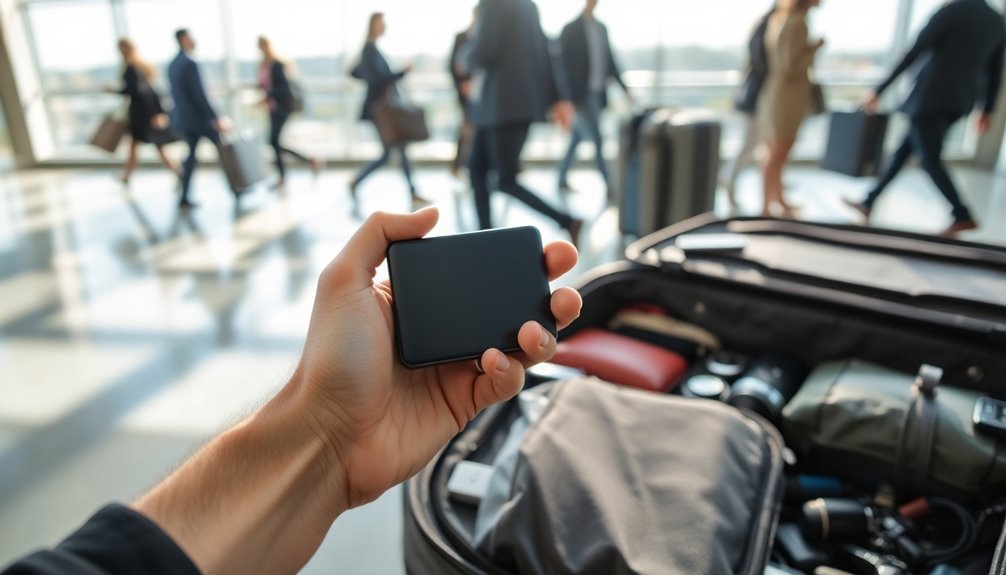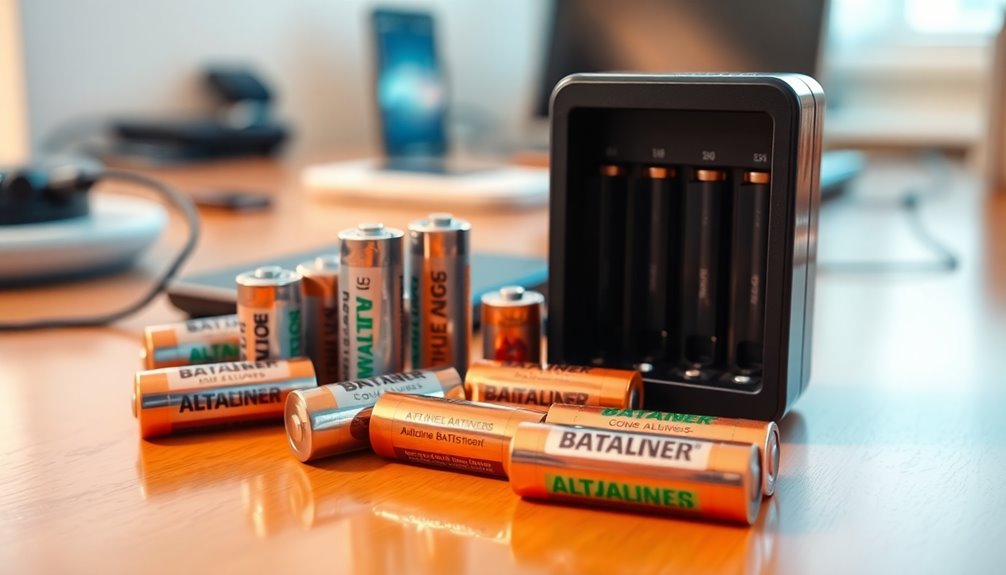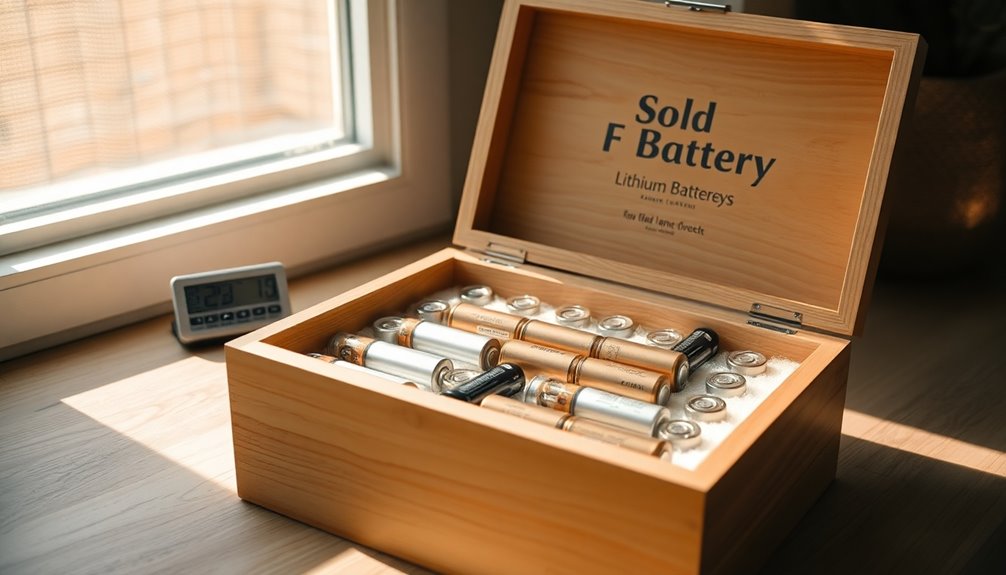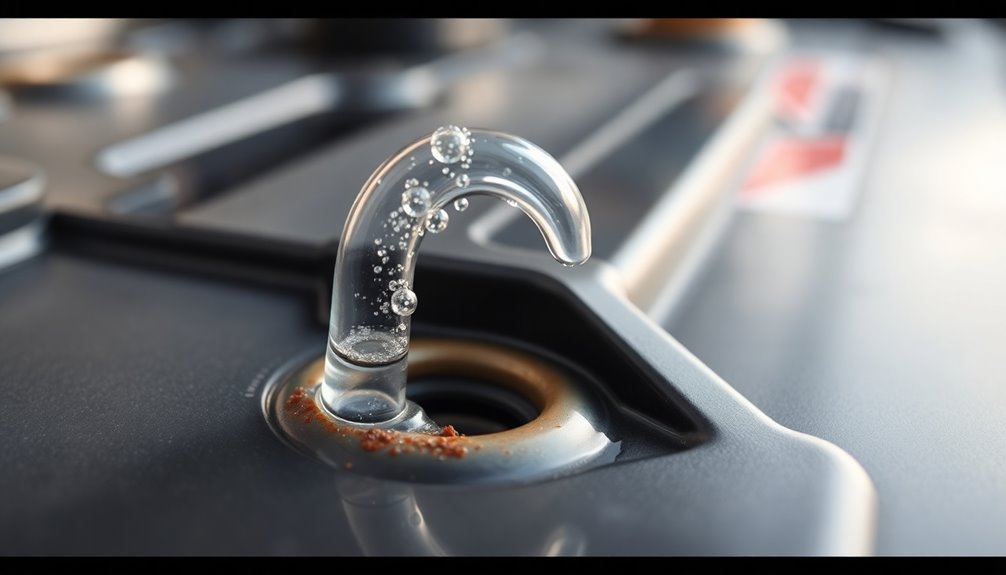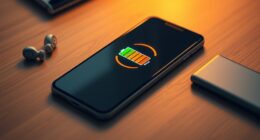You can take batteries on a plane, but you need to be aware of the rules. AA, AAA, and other standard batteries are allowed in both carry-on and checked luggage. However, spare lithium-ion batteries must stay in your carry-on, with a limit of two large ones. Always verify battery terminals are covered to prevent short-circuiting. It's also essential to check batteries for damage before travel. If you're flying internationally, be prepared for varying regulations. Following these guidelines helps guarantee your journey is hassle-free, but stick around to discover more tips for safely traveling with batteries!
Key Takeaways
- Pack AA, AAA, C, D, and 9-volt batteries in either carry-on or checked baggage, but lithium-ion batteries must be in carry-on only.
- Limit spare lithium-ion batteries to two per passenger, ensuring they are protected from damage and short circuits.
- Check for battery damage before travel; damaged batteries are prohibited as they pose fire hazards.
- Remove lithium batteries from smart luggage if you plan to check the bag to comply with regulations.
- Research airline-specific battery regulations, especially for international travel, to avoid security issues and ensure compliance.
Types of Batteries Allowed

When packing for a flight, it's essential to know which batteries you can bring along. You can pack AA, AAA, C, D, and 9-volt batteries in your carry-on baggage without any issues.
If you have spare lithium-ion batteries, remember they must stay in the cabin, and you're limited to two large ones. Button-sized cell batteries and dry cell rechargeable batteries like Nickel Metal Hydride and Nickel Cadmium are also acceptable in carry-ons.
Additionally, consumer-sized lithium-ion batteries, weighing up to 2 grams of lithium, are allowed. Nonspillable wet batteries with a maximum of 12 volts and 100 watt-hours can be transported in both carry-on baggage and checked luggage.
Just keep in mind that lithium-ion batteries aren't permitted in checked baggage.
Carry-On vs. Checked Baggage
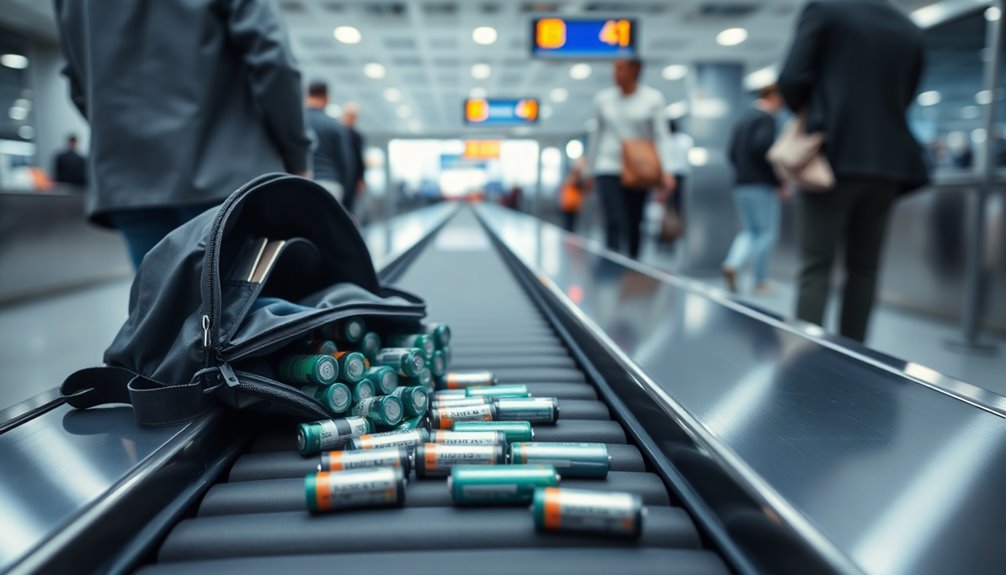
While you might be tempted to pack all your batteries in checked baggage, it's vital to know that lithium-ion batteries aren't allowed there. Instead, you must keep them in your carry-on luggage.
This rule applies to spare lithium-ion and lithium metal batteries, which can only travel in the cabin. If you have other batteries, like AA or AAA, you can pack those in either carry-on or checked bags.
Just remember, you're limited to two spare large lithium-ion batteries, and all batteries need protection from damage and short circuits.
If your smart luggage contains lithium batteries, you'll need to remove them if the bag is checked.
Prioritize safety and follow these guidelines for a hassle-free journey!
Battery Limitations on Flights
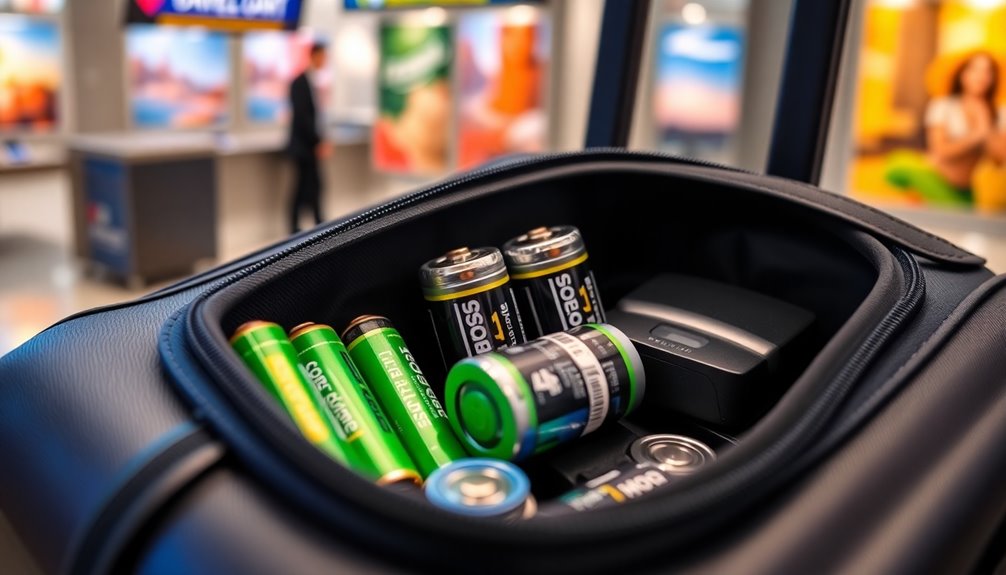
When you're packing for your flight, remember that you can only bring personal-use batteries like AA and AAA in your carry-on.
If you have spare lithium-ion batteries, you're limited to two, and they must stay with you rather than going in checked baggage.
Keeping your batteries safe from damage and short circuits is essential for a smooth travel experience.
Personal Use Requirement
Since airlines prioritize safety, they enforce strict regulations regarding battery transport. The personal use requirement means you can only bring lithium batteries for your own use, not for resale. You're allowed a maximum of two spare large lithium-ion batteries, but these must comply with FAA regulations. Always pack these batteries in your carry-on luggage, as checked baggage is off-limits for lithium-ion batteries.
Here's a quick reference table for your convenience:
| Battery Type | Carry-on | Checked Baggage |
|---|---|---|
| Lithium Batteries | Yes | No |
| Spare Lithium Batteries | Yes | No |
| Damaged Batteries | No | No |
Ensure your batteries are undamaged and use protective cases to avoid hazards during your travels.
Spare Battery Limits
You can bring a maximum of two spare large lithium-ion batteries in your carry-on luggage during flights.
Remember, spare batteries must always be carried in your carry-on; they're not allowed in checked baggage. Each battery needs to be for personal use, so don't pack any intended for sale or distribution.
Before you pack, check your batteries for any signs of damage. Damaged spare batteries can pose serious safety risks during flights.
To prevent short circuits or damage, it's crucial to use protective pouches or cases. By following these guidelines, you guarantee a safer journey while keeping your devices powered up.
Always stay informed about your airline's specific policies for added peace of mind.
Smart Luggage Regulations
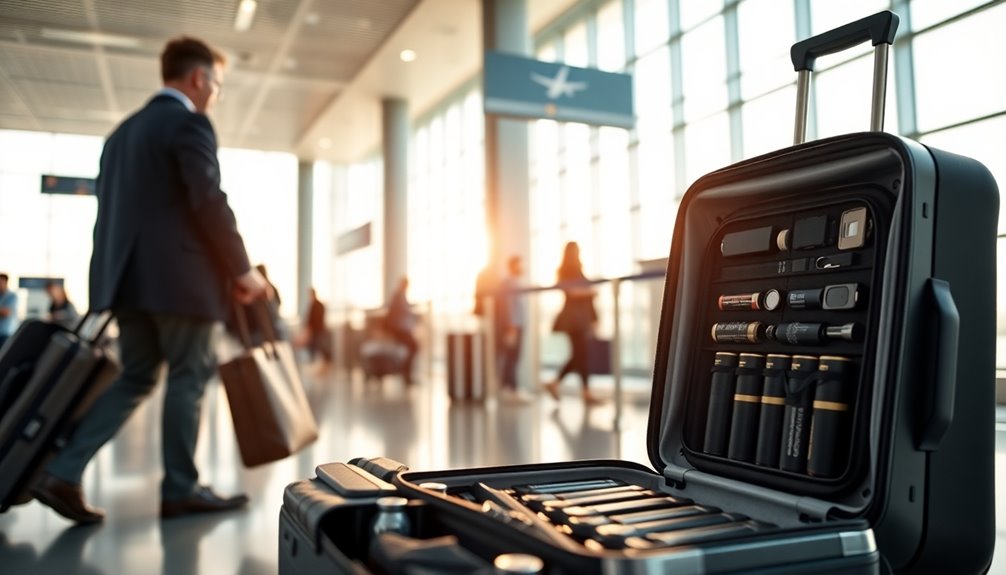
As smart luggage becomes increasingly popular among travelers, understanding the associated regulations is vital for a hassle-free journey.
If you plan to bring smart luggage with integrated chargers, confirm it fits within your airline's size limits for carry-on baggage. However, if you need to check your bag, you'll have to remove the lithium batteries to comply with safety regulations.
Additionally, make certain that battery-powered devices in your smart luggage are protected to prevent accidental activation during your trip.
It's essential to follow specific airline policies regarding smart luggage to guarantee safe transportation. Before you travel, check with your airline for any additional restrictions or guidelines, so you can smoothly navigate your journey.
Responding to Overheating Batteries
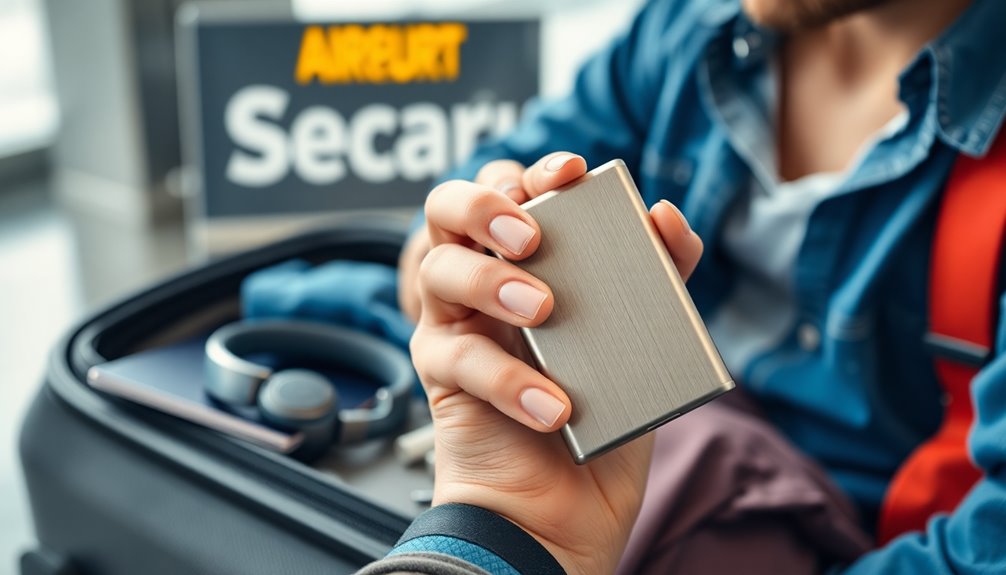
If you notice a battery overheating during your flight, don't hesitate to alert a flight attendant immediately.
They're trained to handle these situations and can implement safety measures to reduce fire risks.
Immediate Action Required
What should you do if a battery starts to overheat during a flight? Immediate action is required.
First, notify a flight attendant immediately so they can handle the situation properly. Avoid pouring water on the overheating batteries, as this can worsen the problem and create additional risks.
Cabin crew members are trained to manage battery-related emergencies and have the necessary equipment to address these incidents safely. If you notice any signs of overheating, such as smoke or unusual smells, report it right away.
Your vigilance can prevent potential hazards and guarantee the safety of everyone on board. Remember, swift action is key when dealing with overheating batteries in the confined space of an aircraft.
Fire Risk Management
When a battery overheats during a flight, it's crucial to act quickly and follow established fire risk management protocols. Notify a flight attendant immediately; they're trained to handle such emergencies. Avoid pouring water on overheating batteries, as it can worsen the situation. The cabin crew is equipped with the proper tools to manage this risk effectively.
| Action | Do's | Don'ts |
|---|---|---|
| Notify Crew | Inform a flight attendant | Wait or ignore the issue |
| Handling Overheating | Use proper equipment | Pour water on batteries |
| Stay Calm | Follow crew instructions | Panic or create chaos |
Safe Travel Practices
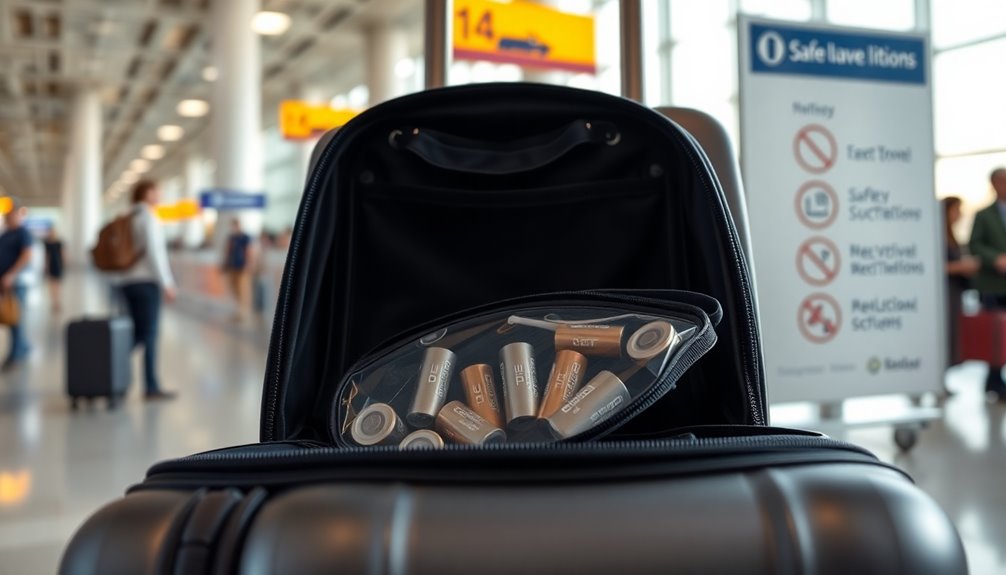
To guarantee a safe journey, it's crucial to follow specific practices regarding battery usage during air travel.
Always pack lithium-ion batteries in your carry-on luggage to comply with airline regulations and reduce fire hazards. Before you travel, inspect all batteries and devices for damage, as damaged batteries can overheat and cause serious issues.
Confirm that your devices are powered off during takeoff and landing to minimize accidental activation. Use protective cases or pouches for spare batteries to safely handle them and prevent damage or short circuits. Consider covering terminals with electrical tape for extra safety.
If you notice any signs of overheating or swelling in batteries or devices, immediately notify the cabin crew, who are trained to handle these emergencies.
Packing Guidelines for Batteries
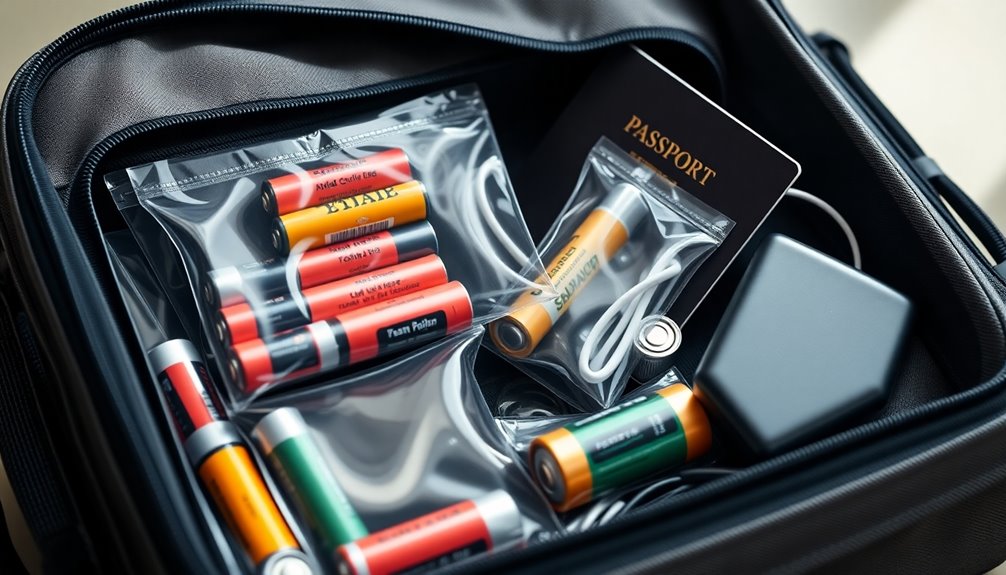
Packing batteries for air travel requires careful attention to guidelines that guarantee safety and compliance with airline regulations.
Always pack rechargeable batteries in your carry-on luggage, as lithium-ion batteries are prohibited in checked baggage. To prevent short-circuiting, place lithium batteries in plastic bags or cover their terminals with electrical tape.
Limit spare lithium-ion batteries to two, confirming they don't exceed 160 watt-hours (Wh). Keep batteries visible during the flight and power off devices during takeoff and landing for added safety.
Before packing, inspect all batteries for damage and use protective pouches or cases to minimize risks.
Following these packing guidelines for batteries will help confirm a safe travel experience.
International Travel Considerations
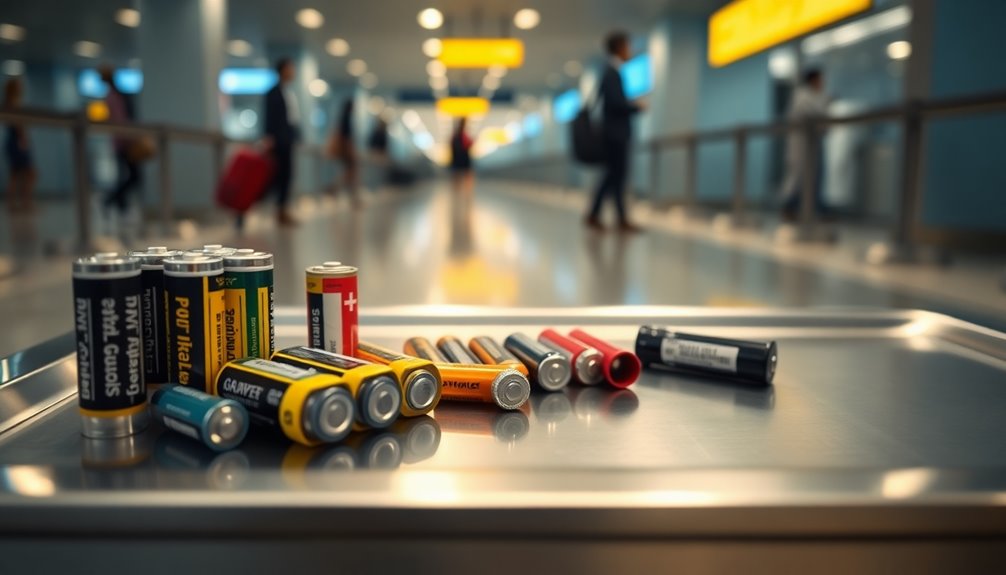
Although traveling internationally can be exciting, you need to be aware of varying security procedures that may affect how you handle batteries. Different countries have different regulations, and some airports may conduct more thorough inspections of your electronic devices and battery packs.
Research airline-specific battery capacity regulations before you fly, as restrictions can differ considerably. In regions like Germany, expect longer security checks, especially if you're carrying high-capacity devices.
If you're returning from an international flight with a larger quantity of batteries, be prepared for stricter inspection protocols. To mitigate the risks associated with battery transport, it's wise to carry documentation for high-capacity batteries to facilitate smoother security checks and guarantee compliance with local regulations.
Regulations for Lithium Batteries
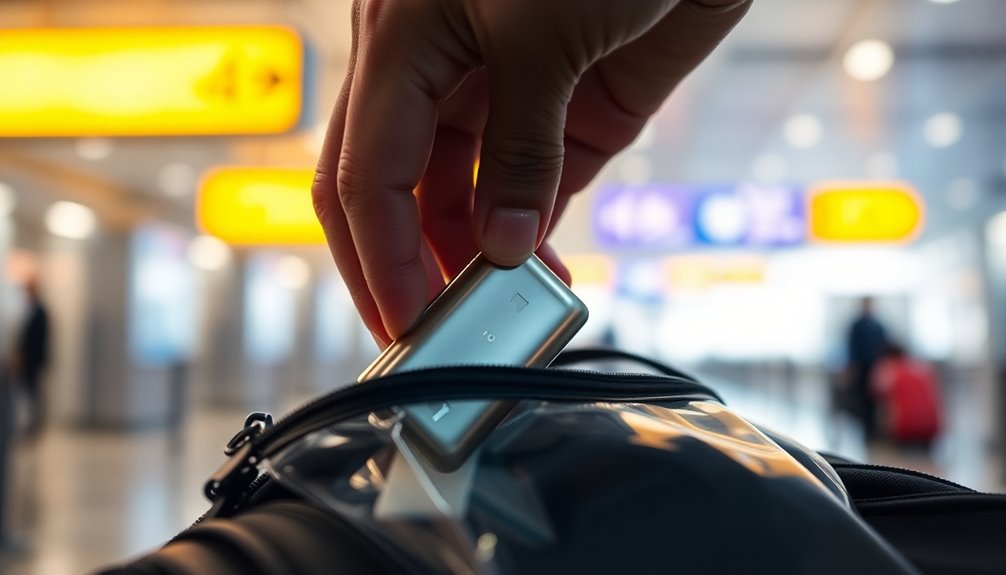
What should you know about the regulations for lithium batteries when flying?
When traveling, you must carry lithium ion batteries in your carry-on luggage. You can bring spare lithium-ion or lithium metal batteries, but never in checked baggage.
Each passenger is limited to two spare large lithium-ion batteries, each between 101-160 watt-hours (Wh). Confirm the terminals of these batteries are covered or insulated to prevent short-circuiting.
It's also vital to comply with FAA regulations, which require that you keep batteries partially discharged to no more than 30% state of charge for shipping.
Following these guidelines guarantees your safety and helps avoid any travel disruptions.
Frequently Asked Questions
Can You Bring Batteries on a Plane Carry-On?
Yes, you can bring batteries in your carry-on luggage.
Just make sure they're AA, AAA, C, D, 9-volt, or button-sized cell batteries.
If you're carrying lithium-ion batteries, they should contain up to 2 grams of lithium.
Remember, you can only take two spare large lithium-ion batteries, and they need protection from damage.
Always check for any signs of damage before packing them, as all lithium batteries must stay in the cabin.
Where Do I Pack Batteries When Flying?
When you pack for your flight, think of your batteries as the heart of your devices; you wouldn't want to leave them behind.
Always stash them in your carry-on luggage. This way, they're safe from the depths of checked bags.
Keep spare lithium-ion batteries visible and protected in pouches to avoid short circuits.
How Many Spare AA Batteries Can I Take on a Plane?
You can take an unlimited number of spare AA batteries on a plane, as long as they're for personal use.
Just make sure you protect them from damage and short circuits. It's best to pack them in your carry-on baggage.
Cover the terminals with electrical tape to prevent accidental activation, and always check for any damage before packing.
Following these precautions keeps your trip safe and hassle-free.
Can I Take Battery Devices on a Plane?
Picture your favorite device buzzing to life as you board the plane. You can definitely take battery-powered devices like smartphones and laptops with you, but make sure they're in your carry-on.
Always check for any damage before travel. Spare lithium batteries should stay in the cabin, not checked luggage.
During takeoff and landing, turn them off and keep them visible. Following these guidelines keeps your journey smooth and safe.
Conclusion
To summarize, when it comes to traveling with batteries, knowing the rules can save you a lot of hassle. Are you prepared to follow these guidelines and guarantee a smooth journey? Remember to pack batteries in your carry-on, check the limitations, and stay informed about international regulations. By taking these precautions, you can enjoy your travels without worrying about battery-related issues. Safe travels, and keep those devices powered up responsibly!

